
Big Trip 2024 - Cambodia Part 2
- Anne B 10milesfrom

- Jan 21, 2024
- 9 min read
Now to see a bit more of Cambodia! Our Post Bus taking us north had just 5 passengers. One man, who got onboard, shut his eyes and slept the whole way; 2 charming Cambodian girls who were Air stewards with their national airline and had few days off, and us! Travelling like this enabled us to see Cambodia outside the main destinations, and we had chosen to spend a night in Kampon Thom, halfway to Siem Reap. Our hotel was the Sambor village and it was charmingly bohemian with a great and very reasonable terrace restaurant, overlooking the luxuriant gardens. Food was locally sourced, home produced, and delicious. Most delightful was the lovely sound of birdsong, including many swift, and the serenade of frogs and toads at night.
The hotel had arranged for a local tuktuk driver to take us out next morning through the countryside to 2 local spots of interest. The Golden Boat temple at Sampou Meas Sampou Prak was only built in 2013 and is a stunning collection of temples and shrines adjacent to the river. Sadly, due to its remoteness, we cannot imagine it gets many visitors, but it is well worth finding.
Next, on to Santuk Silk farm, where the delightful owner, Navin, continues the work her husband started, providing employment for local villagers. They raise the silkworms and spin the silk using traditional methods. The silkworms in the picture will eat 3 full baskets of leaves each day from their mulberry trees. Today the ladies make beautiful silk scarves which are sold at a very competitive price. This is just off the main road and really worth a visit.
Driving around revealed many homes that did not appear to have basic facilities, and many children who probably should have been in school. But so many waves and smiles! Almost every house appears to be selling something. Food, tyres, shoes or street food. And however humble the house, they nearly all have a shrine in the garden! Some shrines almost dwared the house! So the roads all had sections selling shrines and statues in all shapes and sizes! We were so glad we had done this.
Sam the taxi picked us up at 2pm and drove us to Siem Reap (88 miles) via the ancient temple complex at Sambor Prei Kuk. An official, English speaking guide appeared as we arrived, and we said yes to a tour. She looked about 14, and admitted she had only done 1 month of English study which she paid for herself. She had learnt the script by heart and gave us lots of information, but could not understand anything we asked! But she was so charming we could forgive anything! Suddenly she said "Why do you go to the toilet?" We were somewhat staggered and then she chuckled. "I tell joke" the answer, which got slightly lost in translation, and needed Google translate to sort out, turned out to be "because the toilet can't come to you!" All part of the service!! Oh, and the temple ruins! They were all built between the 6th and 9th century, when this was Ishanapura, the capital city before it was moved to Angkor and the much more famous temples were built there. The site was vast and of the hundreds originally built, the ruins of 125 remain. In distinctive red sandstone, there was still evidence of incredibly ornate carving, inscriptions and statue bases. One temple was engulfed by a tree, although you could still get inside. 10 are octagonal! We saw our first monkeys here too.
On to Siem Reap, in complete contrast. Home of Angkor Wat, one of the most important heritage sites in the world, this city has grown up to serve tourism, and is full of hotels, hostels, restaurants and clubs. But a lot are empty. Visitor numbers have not recovered since Covid and is causing many problems for local people. Our hotel was the utterly delightful Won Residence. Hidden away, just a US$2 tuktuk ride from the centre, it was an oasis of calm in a bustling city. The staff were all wonderful. Most of their guests are French, and they would forget that we were English and start speaking in French. If I answered in French, and Chris in English, they would collapse in fits of giggles. In common with all our experience here, we found they had learned all the phrases they needed..'How are you?' 'Would you like tea or coffee?' ''Do you need the tuktuk?' But when Chris asked for milk it took 3 of them to understand what he wanted! It is an interesting approach to language learning, especially as they nod sagely and say 'yes of course' to whatever you ask, which could have catastrophic consequences! We have learned that anything important needs to go through a more fluent speaker as well. But this is not a criticism! Our ability to speak Khmer is non-existent, and their super personalities more than made up for the language hiccups!
Another lovely rooftop restaurant makes this our favourite hotel so far!
The next day we had arranged a trip to the huge lake, Tonlie Sap. An astounding 155 miles long in the wet season it is the largest lake in SE Asia, and was once teeming with fish, accounting for 40% of Cambodia's protein consumption. You can guess what is coming next. Falling water levels, pollution, logging and over fishing are massively threatening its fish stocks. In 2022 a programme was set up to restrict illegal fishing, and to breed and reintroduce fish, but there are many communities who live on and around the lake who depend on it and their way of life is threatened. Our trip involved a 5.30am breakfast, and then 4 hours in small boats threading through waterways at the northern tip of the lake. As the dry season progresses all the waterways dry up and this trip would not be possible.
Our main goal was the Preak Toal bird reserve and as we approached the sky was full of huge soaring birds. This is home to some of the largest waterbirds in the world, some of which we had never heard of! Pelicans, and black stork are alongside huge roosts of Painted Stork, Openbills, Black-Headed Ibis, Greater and Lesser Adjutants, Spot-billed Pelican, Milky Stork, White-winged Duck, Chinese Pond Heron, Egrets of all sizes and many more. It was an incredible privilege to watch clouds of these magnificent birds soaring above you on the thermals. Chris even climbed to the top of a swaying, stick built bird observatory tower lashed to a tree! I only got part way!
To reach the reserve we passed local people bringing in so many boats and baskets full of tiny fish. Many locals live in floating villages. This is not really a tourist area, and there is no road access within miles. Each community has a barber, hardware store, grocers, and a floating community hall, which even had a wedding taking place as we passed! Most amazingly, as the water levels drop, the whole village will tow itself to a new location in deeper water. A good chance to get away from those neighbours you've had an argument with! We also visited a women's project where they harvest the prolific water hyacinths, and weave the stems into baskets, mats and souvenirs which are sold at markets. Our packed lunch from the hotel was in one of their woven baskets!
An incredible day out, but we had a bit of energy left, so we went for a late afternoon wander along the riverfront, and visited the 2 main temples in the city centre. Wat Preah Prom Rath, and Preah ang Chek Preah ang Chorn shrine were both beautiful and busy with worshippers and tourists. The Royal Palace is closed to visitors, but behind it a large colony of fruit bats were just waking up as dusk fell. We headed back to the hotel for a well earned dinner!
Well, I said we would be back to normal with this blog! Not exactly!!
On day 2 we finally went to Angkor, leaving at 5am for the obligatory Sunrise shots!
So, I have ended up writing rather a lot about ruins!! I wanted to record as much as I could remember of this amazing place to jog our fading memories in years to come, but please feel free to just look at the pictures!! Suffice to say...it lived up to all our expectations! We had heard of Angkor Wat, but now discovered that this is a misnomer. Angkor was the capital city of the Khmer kingdom from the 9th to the 15th Century. The whole area would have covered over 350 square miles, housed over a million people, and contained over 1000 temples! Angkor Wat is just one of those temples, albeit the biggest, best preserved and the most recognised. Built in the early 12th century it is the largest religious temple in the world.
According to inscriptions, the construction of Angkor Wat is thought to have taken approximately 30 years, 300,000 laborers and 6,000 elephants. It used around 5 million tons of sandstone from quarries 30 miles away and a complex system of canals was created to move it. The external wall of just this one temple is 3.6kms long, and the huge moat is 5km long! It was built as a Hindu temple in the likeness of Mount Meru, and dedicated to Vishnu, but the whole site gradually converted to Buddhism 100 years later, and is still used today. No-one ever lived there. It was just for worship! The sandstone of Angkor Wat is so ornately carved, and there is a covered arcade running all around the temple containing a continuous carved frieze depicting Hindu stories in white limestone.
In the centre, four huge indoor ponds held water, and a buddhist monk was giving blessings! Some of the wall decoration is visible here, and in the very centre, if you place your phone on the floor with it's high tech digital compass, it shows that the temple is perfectly aligned with the cardinal compass points. It is all absolutely incredible. And that was before breakfast!!!
We then visited Angkor Thom, which was once a city within a city containing many temples! The walls are 8 metres high and the moat is vast, bigger than Angkor Wat! The main entrance is across a bridge lined with Gods on one side and demons on the other, holding the god Naga in a tug of war called Churning the Ocean milk in Hindu tradition. This releases the drink of immortality and appears again and again across the site.
Bayon temple, built around 1200 BCE marks the city centre and is believed to have once had 172 towers containing 54 huge carved smiling faces on its towers. At least 12 are said to be visible at any one time. The intricately carved bas reliefs are astonishingly detailed.
Some of the temples are too fragile to climb, but we were able to climb to the top of The Baphuon, a so called mountain temple, and it is believed its towers may once have been golden. The stairs were very steep and somewhat rickety so I was very proud that my vertigo and I made it to the top. Health and safety UK style would have a fit. No guard rail... but some very helpful signage next to the sheer drop!
Walking on, we passed monkeys and pools, and our guide told us that these temples were one of the inspirations for the Monkeys in the jungle scene in Rudyard Kipling's Jungle book.
Next, the beautifully decorated Terrace of the Elephants is 350 metres long and bordered the former parade and display grounds where the King greeted his troops.
The Terrace of lepers is also 12th century, and is one of the most intricately carved parts of the complex, being crammed with carvings of God's, demons and dragons.
Ta Prohm is one of the most photographed temples, partly because it is eerily being taken over by Silk Cotton trees, some over 200 years old. The temple was built without mortar, so the trees could get a hold more easily. It is also the Tomb Raider temple, where Angeline Jolie was famously filmed plucking a Jasmine flower and falling through into the temple..... so we were told. It is an amazing sight to see the huge trees almost at one with the walls. Again there was some wonderful carving, and a room with holes in the walls that we were told was once the treasury, and the walls were studded with jewels!
As a reminder that we are in the jungle, there were termite mounds within the walls, some scary looking bees nests in the trees, and possibly even scarier huge spiders nests!
The last temple we saw was the oldest. Built in the 10th century, Banteay Srei was one of our favourites. Built in rose sandstone, it was unusually dedicated to Shiva, and built forth King'smother, so known as the Lady temple.
It contained some of the most exquisite patterns and carving. Being 30 minutes drive from the main site it was also very peaceful in comparison.
Although the main site was busy, it was not horribly crowded and there were no queues. Apparently, pre covid it would have been avery different story, and although it was a bonus for us, we felt so sorry for all the drivers, guides and businesses that are still really struggling here, many of whom were on a hand to mouth existence already, and with no state assistance at all.
Back to the hotel, and a quick shower and change because we were going out to meet a lady who I had 'met' online through my Instagram posts. Ksenija is one half of @Crazyparentstravel and we seemed to have shared a lot of travel experiences! She was in Siem Reap volunteering with an excellent NGO called Cambodiancommunitydream.org , so we seized the opportunity to meet up with her, and Jenni, the founder. So glad we did. The time flew by in super company, and we were sad to leave. Sometimes, social media really works in a positive way!
We ate at Indochine, on their recommendation and had a super meal to end our time in Cambodia, a crazy, wonderful, friendly country that has no limits to what it will load on a bike or a motorbike trailer!!
We feel so incredibly lucky to have seen these marvels. We just hope the trip hasn't peaked too early!








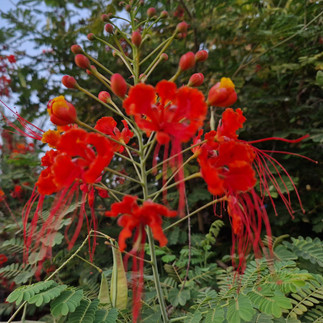



















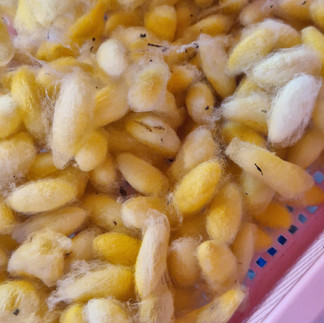
















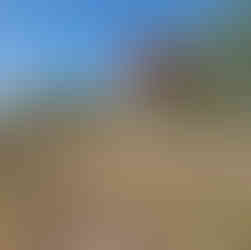















































































































































































































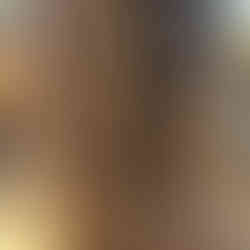






















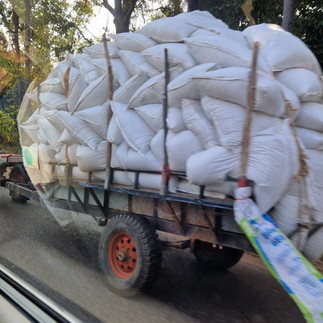
Comments